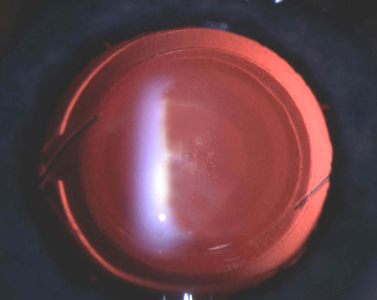YAG Capsulotomy
Some patients develop what is commonly called a “secondary cataract” after cataract surgery and the implantation of an intraocular lens. This is a misnomer; once a cataract is removed, it does not recur.
Your eye’s original lens was located in a capsule at the back of the eye. When your cataract was removed, the intraocular lens was inserted into this capsule. In some patients, a hazy membrane can develop in this capsule, behind the new lens. This is called a posterior capsule opacity, and it can produce a blurring of vision similar to a cataract, hence the misnomer, “secondary cataract”. While posterior capsule opacity can occur within a few months of surgery, most often this opacity occurs two or three years later.
Posterior capsule opacity may occur in up to 40 percent of patients who have had cataract surgery. Although it cannot be prevented, it can be easily treated.
A procedure called a YAG Laser Capsulotomy is used to open the membrane behind the eye. For this procedure, your eye will be dilated and numbing drops will be applied. A special contact lens will be placed on your eye. The Yag laser will make a small hole in the center of the capsule, allowing light to flow directly onto your retina.
During this procedure which is entirely painless, your head will rest on a frame while the doctor operates the laser. The entire treatment takes approximately 10 minutes. Since your eye will be dilated, you will be unable to drive for a few hours following the treatment. Therefore, you should arrange for transportation.
You will be able to resume normal activities immediately after treatment, and you should notice improvement in your vision within a day or two. It is also quite normal for you to observe floaters for a few days, until these begin to subside.
The YAG Laser Capsulotomy is considered to be very safe. Occasionally, some complications can occur. While floaters are normal for a few days following the treatment, if they suddenly worsen or if you experience a veil drifting across your vision, this could be a sign of a retinal tear. You should contact the doctor immediately.


